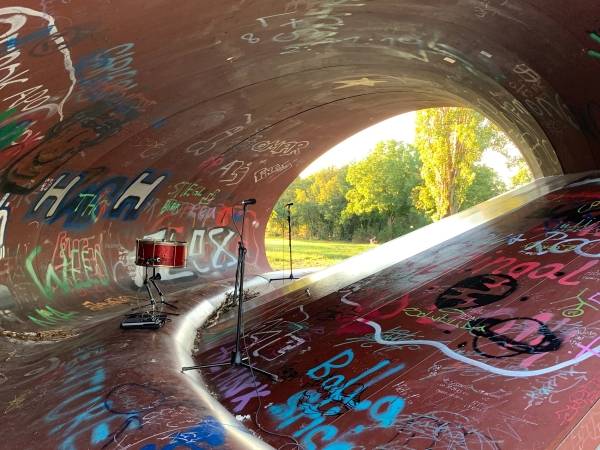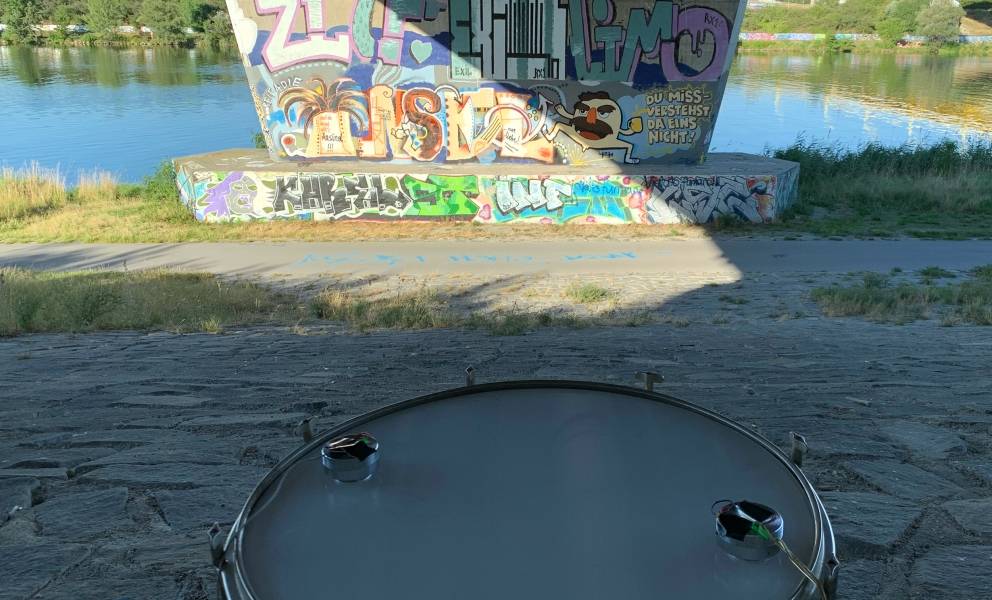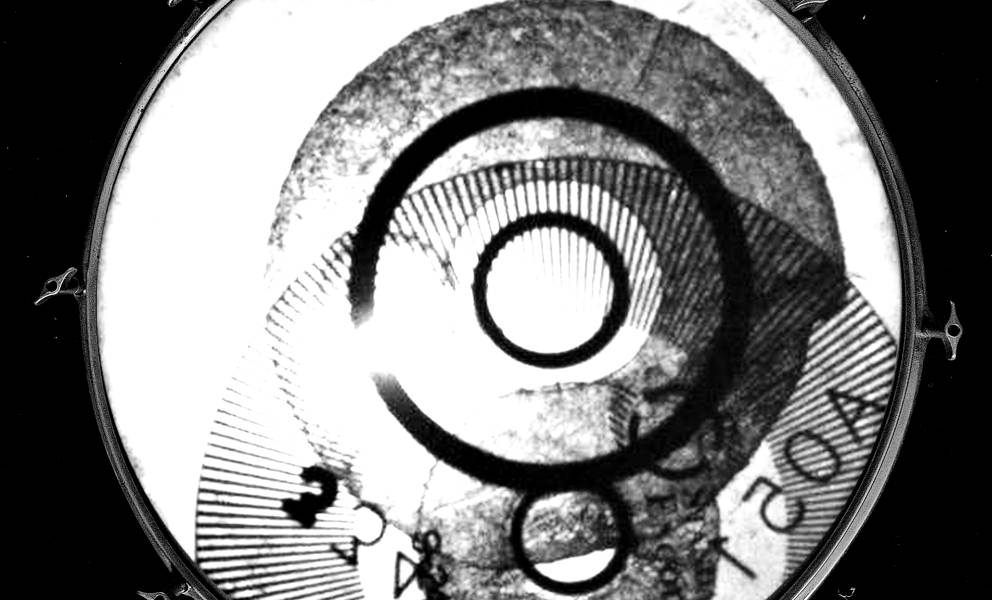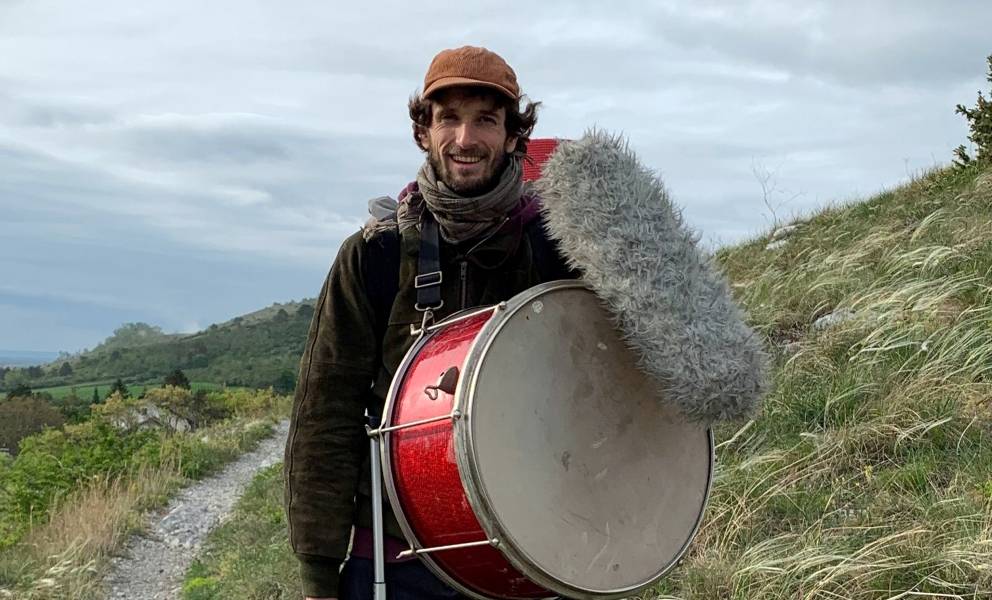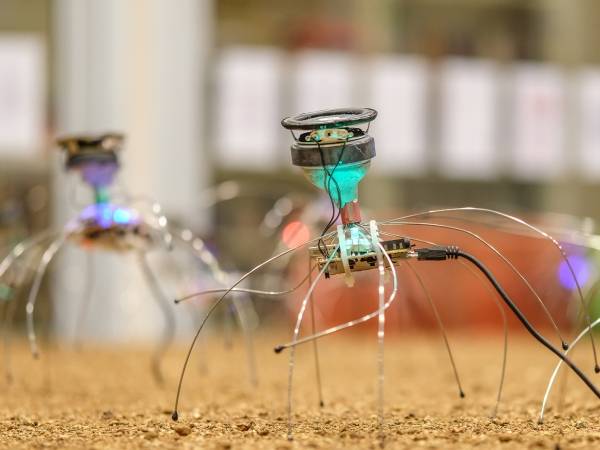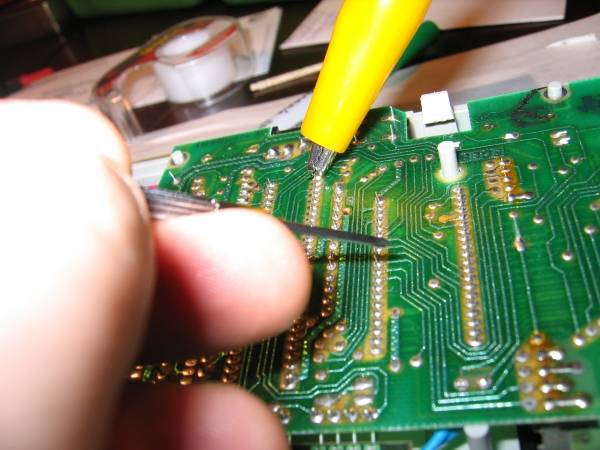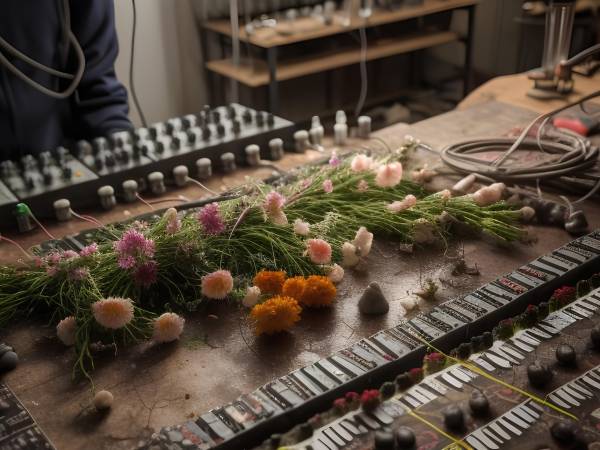4 Minuten
Introduction
"Are you coming over with your record player?"
Transceiver is a vinyl release, artwork, and instrument. Listeners are invited to experiment with the record and listen together. The four-channel composition becomes perceptible when the needles of two opposing turntables are simultaneously placed. A Morse code signal is emitted, allowing the two sides to synchronize. The records are played together via two separate pairs of speakers in the room. The valid question of who already owns two turntables at home is returned to the listener with the invitation to become creative themselves. The records can be played in stereo, but their spatial potential is fully realized in quadraphonic sound. Further combinations, changing speeds, lifting the needle, playing backward, and/or the use of different playback devices are desired in good old John Cage manner. The possibilities are diverse and are meant to invite collaborative listening and experimentation. At the end of each side, there is an endless loop.
Communication Across Distance Throughout Time
Inspired by the rapid evolution of transmission technologies, Transceiver explores communication across distance and peripheral areas of analog and digital information transmission. People have always tried to communicate with each other over distances. Whistled languages like Silbo in the Canary Islands or Kusköy in Turkey convey complex messages through whistling sounds. The players of the manguaré drums of the bora in the Amazon or hourglass drums from West Africa use a kind of drum telegraphy based on speech rhythms to exchange short information over a distance of up to 20 kilometers. Txalaparta players in the Basque Country still communicate over distance with multi-layered recognition rhythms.
All of these are electricity-free analog ancestors of mobile phones. Although no audio recordings of these communication techniques were used, the concept of acoustic information exchange was a significant source of inspiration for the sound material. Morse code, used for synchronization, describes the titles of each side in the telegraph alphabet TxRx I – IIII. While the first record is characterized by textures and multifaceted reverberation spaces, TxRx III/IIII focuses on artifacts of digital communication transmission. Radio and radio frequencies, airplane tower communication, truck and ship radio, as well as Bluetooth and WLAN transmission, were recorded using SDR# (Software-defined Radio) RF receivers. Datassette audio programming from early computers and sonified data transfer between computers also served as sound material.
As more people use digital communication, the network of virtual connections becomes more complex and fragile. Poor reception and quality compression create glitches, noise, and interference. These artifacts of modern communication feed the second part of the composition in the form of sound collages. These recordings were further altered through filtering, tempo, and pitch manipulation. It might even be possible to install a computer game on a Commodore 64 with them. :)
TxRx I/II: sinew waves and thin jute sticks played on bass drum with crickets and outdoor ambiance, twisted tube trumpet with saxophone mouthpiece in a cave with stalactite sounds, resonating metal sculpture colored with homemade piezo pickup preamps. Performed by Stefan Voglsinger, recorded by Aras L. Seyhan and Stefan Voglsinger.
The outdoor recording studio
The recording process oscillated between electroacoustic sound research and outdoor reamping. These recordings were played back through transducers onto resonators, stimulating the natural resonances of the objects and their environment. Two central objects were a 19" base drum and a satellite dish, which were used as loudspeakers (resonators) and instruments. Ambient noises and live microphone and resonator manipulations inscribed themselves into the soundtracks, blending with the reverberation spaces to form a complex sonic body.
The starting material was field recordings, RF transmissions, and sine waves, which were transmitted to the objects as polyrhythmic tremolo vibrati via transducers. Additionally, the surfaces of the instruments were played live through microtonal wiping, scratching, brushing, and striking. The recordings in the church were colored with tape recorders and electronics such as analog filters, bit reducers, and preamplifiers. No additional digital reverb effects were used.
Places and non-places
For the outdoor recordings, Aras L. Seyhan and Stefan Voglsinger went to various acoustically interesting places and non-places in Vienna and the surrounding area. With a mobile recording setup, they explored the reverberation spaces - under bridges, in the Vienna River, in a cave, inside a piano, on the Danube Island, in residential building corridors, on metal sculptures, in drainage pipes, and nature. At each step of a new recording, additional manipulation was woven into the sound material. The distance to the sound source, microphone position, live transducer manipulation, and integration of ambient noise played a significant role. In the studio, these recordings were mixed and rearranged, resulting in a quadraphonic soundscape with acoustic leaps in time and unheard perspectives of peculiar places.
TxRx III/IIII: band-pass filtered datassette recordings, RF receiver, no-input mixer and violin bow on satellite dish with feedback chain over piano corpus, pitched radio and bell sounds in the cave. Performed by Stefan Voglsinger, recorded by Aras L. Seyhan and Stefan Voglsinger.
Release
The covers of the double 12" are individually designed and hand-printed. The graphic of the handmade gate-fold cover shows the resonators and outlines of monochromatic circuit board parts. TxRx II/IIII runs inside-out compared to I/II, i.e. backwards. The frequency responses running contrarily when played simultaneously were intentionally arranged in the composition, reflecting the counterparts of the receiver and transmitter sides.
The double vinyl is released on Mamka Records. The Viennese label, was born out of the longing for a space where every production is seen and celebrated as a distinct artwork, and one-of-a-kind in its own right. Mamka releases statements. Small, but mighty, the label finds its home in all kinds of formats, apart from preexisting norms and technical standards. At the interface between contemporary experimental music, fine art, literature, handmade electronics, and love for detail, mamka symbolizes risk, confrontation, benevolent radicalism, and the implicitness of the unique.
The official release of Transceiver will be at echoraum Vienna in autumn 2024.
Stefan Voglsinger
Stefan Voglsinger *1986 is a musician and performer based in Vienna. He studied percussion at the Vienna Music Institute, Music & Movement Pedagogy at the University of Music and Performing Arts Vienna and Sound for Films at the Escuela internacional de Cine y Television in Cuba. He focuses on interdisciplinary experiments with sound and image, developing performances or audiovisual installations, including self-built or hacked electronic circuits. At Setzkasten he modifies analog film projectors, works in the darkroom and in the sound studio. As a curator, he regularly organizes concerts and transdisciplinary evenings, and gives Circuit Cooking soldering workshops in schools and at festivals. He works at the Filmmuseum Wien, is co-curator of Klangmanifeste and plays with The Vegetable Orchestra.
Article topics
Article translations are machine translated and proofread.
Artikel von Stefan Voglsinger
 Stefan Voglsinger
Stefan Voglsinger 